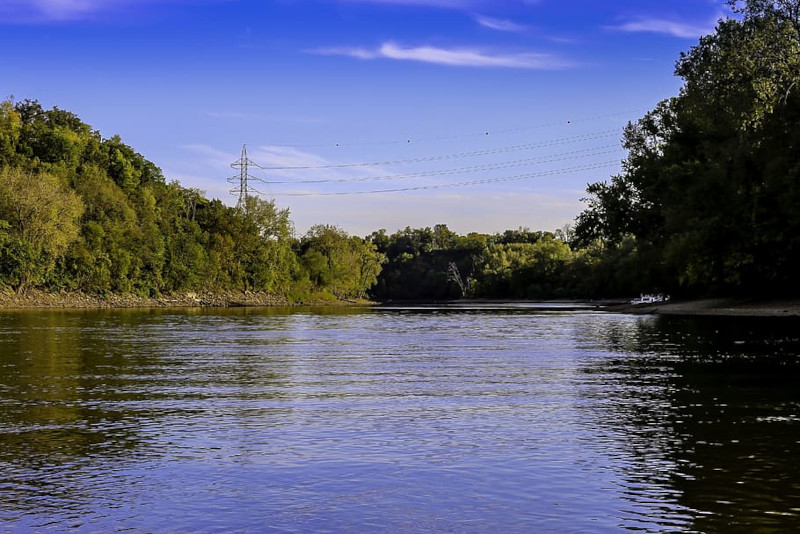
Mississippi River Facts
- The magnificent creation of natural geological forces continues to remain best known around the world by the name of the Mississippi River. But that just forms its english language name. Various local Indigenous Peoples knew the mighty flow by a great variety of other titles.
- The Dakota knew the flow as Haha Wakpa, which roughly translates as river of the falls. The name by which the Choctaw and Chickasaw People knew it, however, was Occochappo, when translated. Meanwhile, the Ojibwe knew this amazing river by the term Messipi.
- Ironically, its english language designation actually derives from an early French language rendering of its title in the native tongue of yet another local tribe. In this case, the Algonguin tongue used the moniker Misi-ziibi. That specific original term aptly meant Great River.
- Regardless of which of these titles, or even still others, it’s called, the wonder stands out among other such features. The first known non-native to view this miracle of Nature bore the name of Hernando de Soto. Records show the Spanish explorer spotted the river in 1542.
- The numerous Nations of Native Americans native to the region knew of it for untold centuries prior to this, though. Innumerable archaeological discoveries of all types prove this beyond doubt. They utilized and depended on its mighty waters for a multitude of reasons.
- Its length remains a matter of which standard one uses. That’s because, as often proves to be the case when measuring the length of rivers, there’s the traditional source and the longest stream source. Using the latter, the Mississippi River is the fourth-longest on earth.
Related Articles
Mississippi River Physical Description
The aptly-named mighty Mississippi River holds an utterly special place of distinction in the hearts, minds, and unique culture of its region. Yet, while wholly deserved, its sheer beauty isn’t the only reason for that wide-reaching appreciation. That’s true since Nature clearly outdid itself here.
This flow also boasts some astounding physical characteristics. Perhaps chief among them, ranks its incredible length. From its immediate point of origin, the river measures an impressive 2,340 mi (3,766 km). Yet, its longest steam source equals a total distance of 3,710 mi (5,971 km).
Despite these mind-numbing statistics, however, it’s surprisiingly quite shallow in depth. At its starting point, it only measures 3 ft (0.9 m) deep! Over the course of its length, though, this naturally varies significantly. But at its deepest, the amazing river’s depth only reaches 200 ft (61 m).
It flows principally southward, and spawns numerous tributaries as it goes. Given this fact, its watersheds drain almost 65% of the country in which it lies. This provides it with another impressive statistic. Due to this situation, it ranks as the thirteenth largest river in terms of discharge.
The very nature of the breathtaking Mississippi River tends to roughly divide it into three distinct sections. These naturally bear the descriptove names of the Upper, Middle, and Lower. Interestingly, its course changed naturally several times throughout its long history due to geological factors.
Mississippi River Location, Formation, and Ecology
The mighty Mississippi River formed in a general region of the globe known throughout the world for its great abundance of geological marvels. In fact, that exact region will no doubt come as no surprise to many of you. That’s because it resides in a specific portion of North America.
There, its main body lies entirely within the confines of the United States. Given the vastness of its watershed, though, a tiny portion of that also appears within two provinces of Canada. The river itself comes to an end in the Mississippi River Delta, where it flows into the Gulf of Mexico.
Evidence indicates that this majestic waterflow formed approximately 70 million years ago. Since then, it’s held many different forms and also flowed in various directions. Its current state largely occurred due to the powerful actions of the Laurentide Ice Sheet of the last ice age.
The melting of the vast quantities of water from this carved out anormous path through the rich sediment that had been deposited. Currently, the river’s base flow comes from Lake Itasca, in Minnesota. Other rivers also flow into it, from their origins, adding their waters to the body.
Not surprisingly, the beautiful Mississippi River additionally serves as home to an incredible array of fauna. A present total of 375 known species of fish actually appear within its confines. That includes such animals as sturgeon, gar, bass, crappie, catfish, northern pike, paddlefish, and walleye.
Many other animals also call its waters home, though. The American Alligator represents the largest of these, but many others join it. Another large reptile present, however, is the equally impressive Alligator Snapping Turtle. Crayfish, aquatic amphibians, and other turtles live there too.
Features Sharing Its Region
Check out our other articles on 7 Stunning Pacific Ocean Species, Golden Jackal, Gobi Desert, Southern Plains Bumblebee, European Honey Buzzard, Red Maple, Tiger Shark, Black Mamba
